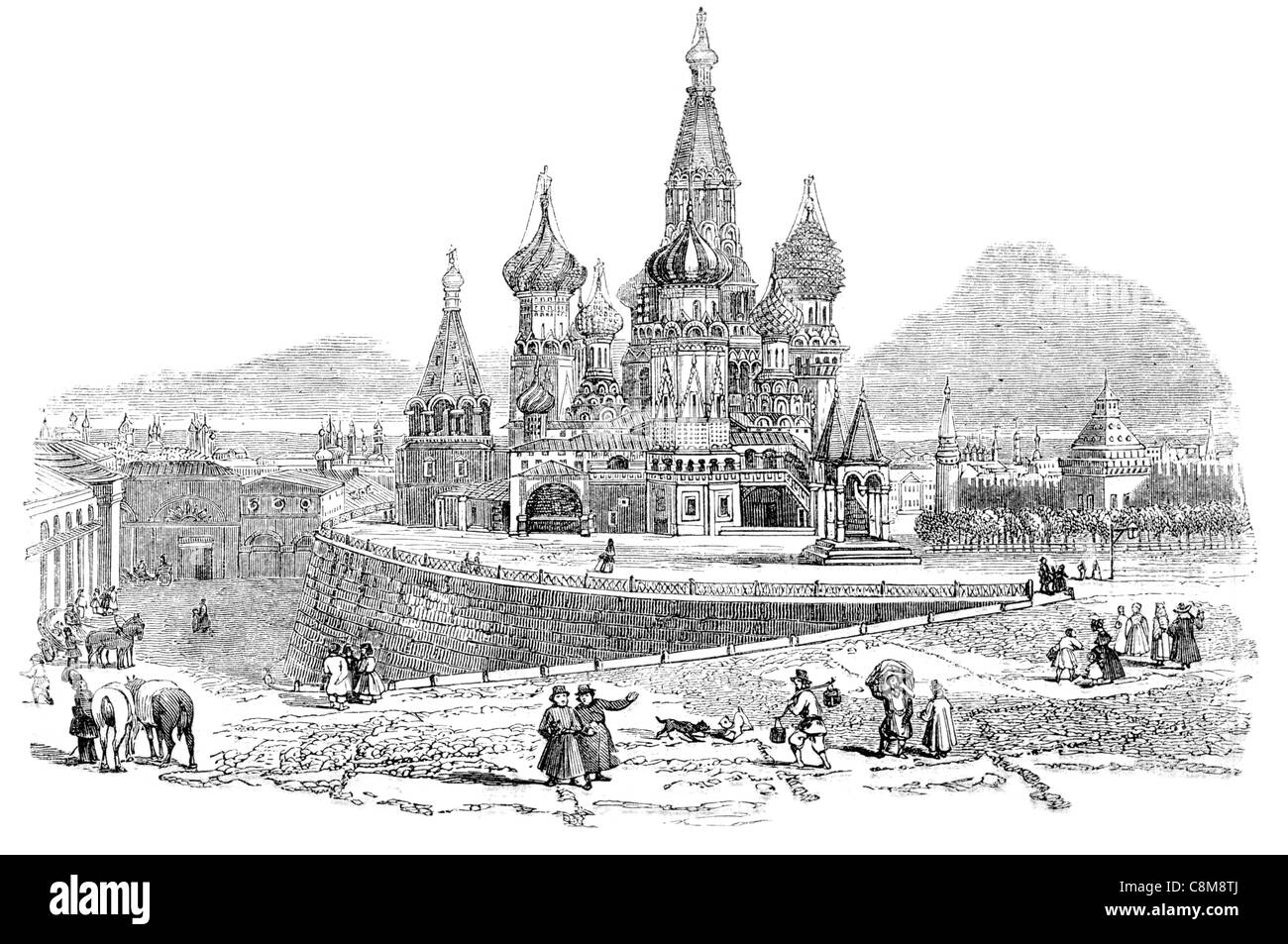Vassili Blagennoy church of the protection of Mary Cathedral Protection Most Holy Theotokos Moat Saint Basil's Cathedral Russian

Image details
Contributor:
SOTK2011 / Alamy Stock PhotoImage ID:
C8M8TJFile size:
34.8 MB (1.8 MB Compressed download)Releases:
Model - no | Property - noDo I need a release?Dimensions:
4277 x 2840 px | 36.2 x 24 cm | 14.3 x 9.5 inches | 300dpiDate taken:
2011More information:
The Cathedral of the Protection of Most Holy Theotokos on the Moat, popularly known as Saint Basil's Cathedral, is a Russian Orthodox church erected on the Red Square in Moscow in 1555–61. Built on the order of Ivan the Terrible to commemorate the capture of Kazan and Astrakhan, it marks the geometric center of the city and the hub of its growth since the 14th century. It was the tallest building in Moscow until the completion of the Ivan the Great Bell Tower in 1600. The original building, known as "Trinity Church" and later "Trinity Cathedral", contained eight side churches arranged around the ninth, central church of Intercession; the tenth church was erected in 1588 over the grave of venerated local saint Vasily (Basil). In the 16th and the 17th centuries the church, perceived as the earthly symbol of the Heavenly City, was popularly known as the "Jerusalem" and served as an allegory of the Jerusalem Temple in the annual Palm Sunday parade attended by the Patriarch of Moscow and the tsar. The building's design, shaped as a flame of a bonfire rising into the sky, has no analogues in Russian architecture: "It is like no other Russian building. Nothing similar can be found in the entire millennium of Byzantine tradition from the fifth to fifteenth century ... a strangeness that astonishes by its unexpectedness, complexity and dazzling interleaving of the manifold details of its design." The cathedral foreshadowed the climax of Russian national architecture in the 17th century. A victim of state atheism, the church was stolen from the Russian Orthodox community as part of the Soviet Unions anti-theist campaigns and has operated as a division of the State Historical Museum since 1928.[ It was completely and forcefully secularized in 1929 and, as of 2011, remains a federal property of the Russian Federation.